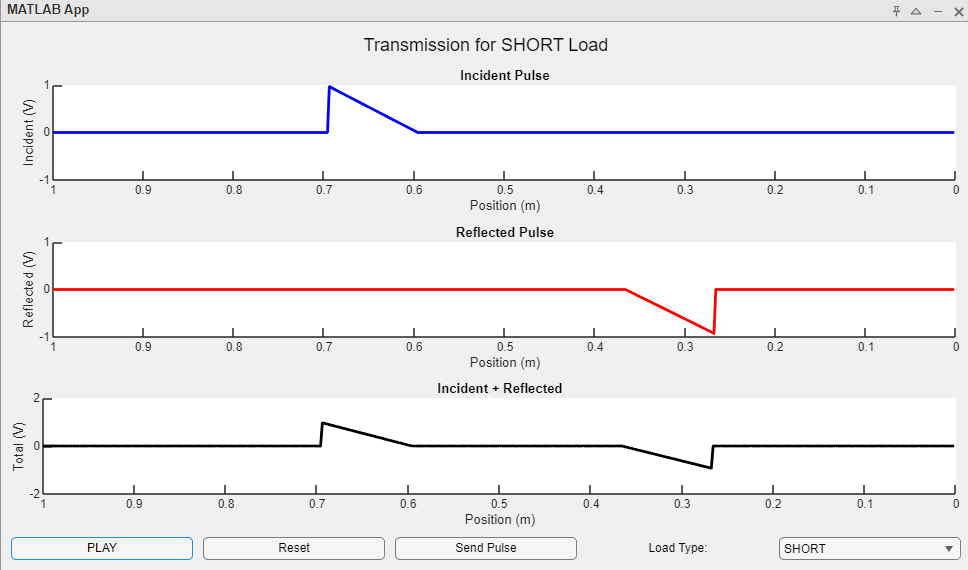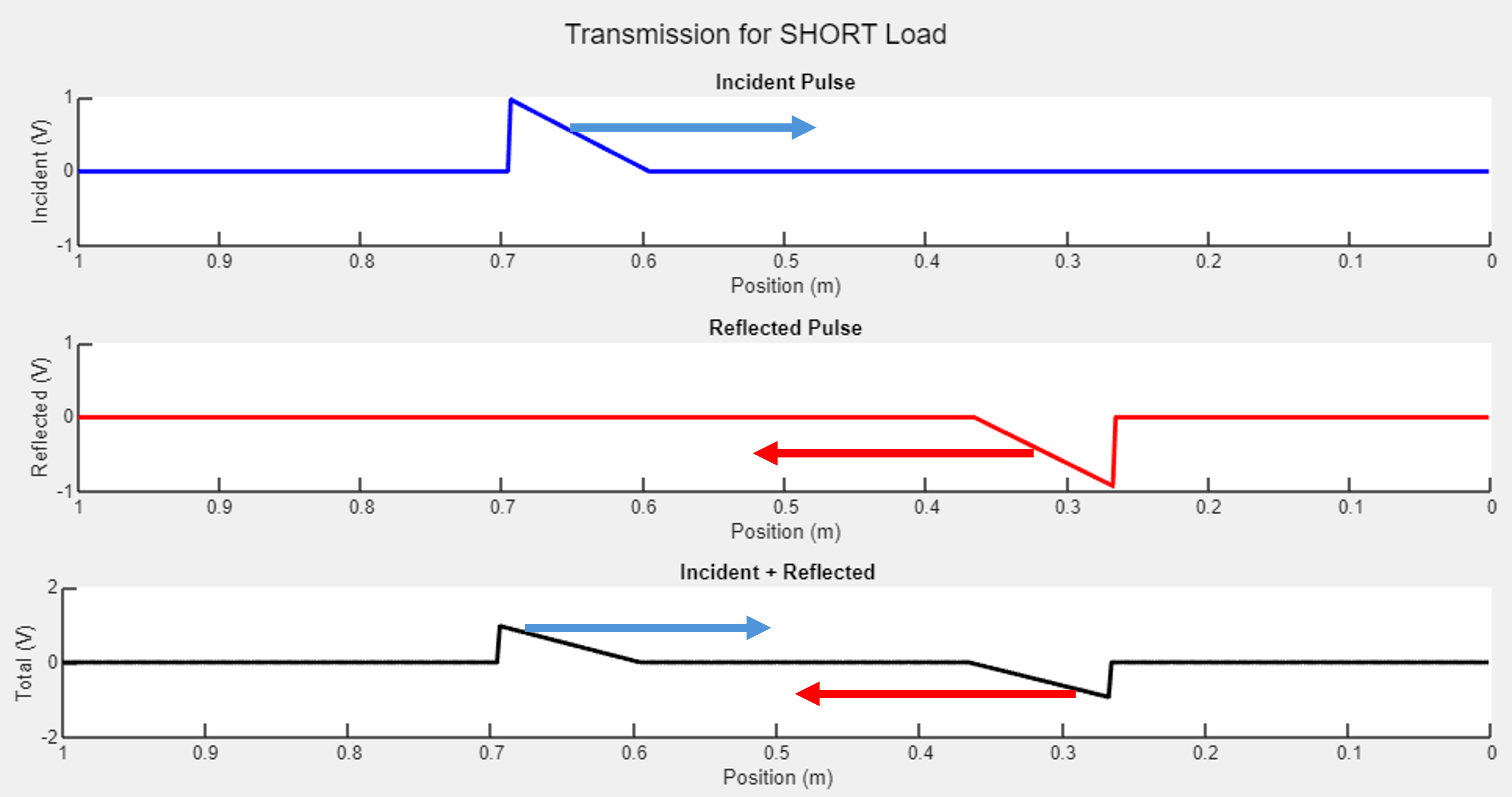6 Example 2-3 Pulse Transmission with various loads
APPLICATION FOCUSED VIEW LINK:
Ω
APPLICATION THUMBNAIL:
IN TEXT DESCRIPTION:
The pulse load simulation application below allows you to examine how different loads affect the transmission of a pulse. to help indicate the direction, the pulse appears as a type of sawtooth waveform: a right triangle where the falling edge is the direction of propagation. You maybe pause the simulation, manually send pulses, and select, in real time, different load types between SHORT, OPEN, MATCHED and RESISTIVE (27 Ω).

STILLS:
IN TEXT DESCRIPTION
Figure [???] shows how a pulse interacts with a short load. Two pulses have been “sent” in this figure. The first has already been reflected. Since the load is a short, the reflection coefficient is -1, so the reflected pulse is simply the negative incident pulse heading in the opposite direction. The latter pulse located at around 0.7 meters from the load is about to collide into the reflected pulse. See pulse load simulation app to investigate the short load more.

VIDEOS:
MATCHED
IN TEXT DESCRIPTION:
Figure [???] is a video of periodic pulses send from the source and how they interact with a matched load. Note the lack of activity on the reflected pulse graph. See the pulse load simulation app for more.
SHORT
IN TEXT DESCRIPTION:
Figure [???] is a video of periodic pulses send from the source and how they interact with a short load. Note that the reflected pulse graph is the incident pulse graph animation but negative and heading in the opposite direction. In the combined graph, the pulses collide into each other, yet do not alter the waveforms after collision. This exemplifies the principle of superposition for waves. See the pulse load simulation app to investigate more on superposition.
OPEN
IN TEXT DESCRIPTION:
Figure [???] is a video of periodic pulses send from the source and how they interact with a open load. Note that the reflected pulse graph is the incident pulse graph animation but heading in the opposite direction. The pulses, unlike the in the short load example, are now positive instead of negative. In the combined graph, the pulses collide into each other, yet do not alter the waveforms after collision. Notice that since both pulses have an amplitude of 1 V, their superposition momentarily reaches 2 V before both pulses separate. See the pulse load simulation app for more.
RESISTIVE
IN TEXT DESCRIPTION:
Figure [???] is a video of periodic pulses send from the source and how they interact with a resistive 27 Ω load. Note that the reflected pulse graph is the incident pulse graph animation but heading in the opposite direction with a decreased amplitude. In the combined graph, the pulses collide into each other, yet do not alter the waveforms after collision. Notice that since both pulses have a positive amplitude, their superposition momentarily reaches higher than 1 volt before both pulses separate. See the pulse load simulation app for more.
APPLICATION STILL CREATION CODE LINK:
APPLICATION MOVIE CREATION CODE LINK:
Media Attributions
- PulseLoadAppThumbnail
- PulseTransmissionStill

